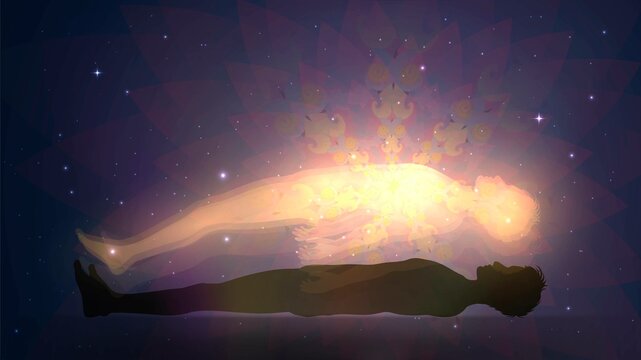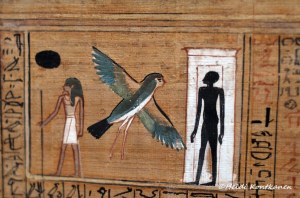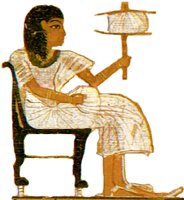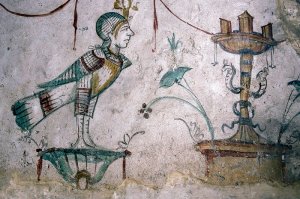What is your concept of the soul?
It’s one of those things that we often talk about, but we don’t have a firm definition of what—exactly—it is. Is it the divine part of ourselves? Is it the immortal part that survives after death? Is it some kind of “essence” of ourselves? Is it our inner life, our thoughts, feelings, passions? Do only human beings have one, or do other beings and things have one, too? Is it what animates us, what makes us alive? In Latin, the word for soul is anima and modern languages like French and Spanish have words for soul (âme and alma) that come directly from Latin.
The English word derives from Old English sawol and is related to a number of similar old-European words. Psychology, the study of the psyche—Greek for soul—thus involves the study (or literally, “speaking about,” –ology) the soul. So psychologists and psychotherapists are concerned with healing the soul.
Most people, throughout the world, have some sort of concept of something like the soul. Yes, of course, the ancient Egyptians did, too. And yes, of course, Our Lady Isis has an intimate concern with souls.
Those of you who have been reading this blog probably already know that the ancient Egyptians did things a little differently. And you may already know that they had a broader concept of what goes into making up the full nature of the human being. These are words like ka, ba, akh, khat, ren, ib, and shadow. We find these terms numbering from about five on the low end to about sixteen on the high end. Often, you will see them referred to as “components” or “parts” of the human being, both in life and afterlife. That’s not quite right, so more-modern scholars will call them “aspects” of the human being. This is much closer.
But I just learned today, that there is an Egyptian word that is not only appropriate and which at least some learned Egyptians seem to have used as the collective term for these aspects. The word is kheperu.* It means “forms, transformations, manifestations” and oh-so-much more. It is found in the name of the Sun Scarab God, Khepri or Khepera. As a verb, it means “changing, transforming, becoming.” The root also has to do with creation, birth, and rebirth.
What I learned is that in some examples of the funerary literature, you will see a list of the familiar aspects of the human being, but with the word kheperu at the end. Scholars think that the word kheperu—transformations—at the end was meant to sum up all the preceding aspects. Why is this important? Because it confirms that the kheperu of a person should not be understood as discreet or disjointed “parts” of the human being. But rather that the ancients understood them to be forms or ways of being that the human being could transform into during different aspects of their life/afterlife journey.
Today, I’d like to focus on just one of these kheperu: the ba.
We have come to use the word “soul” to translate ba because way back in the 4th century CE, a writer name Horapollo (a perfect Egypto-Greek name if ever there was one) so translated it. Horapollo was a Greco-Egyptian intellectual who wrote a book, in Greek, on the meanings of the hieroglyphs. In addition to giving us the ba = psyche equation, Horapollo also connected the ba with the heart, for, he said, the Egyptians say that the soul resides in the heart.
Here’s Horapollo’s entry on The Soul:
That the hawk is a symbol for the soul is clear from the interpretation of its name. For the hawk is called by the Egyptians Baieth. If this name is divided, it means “soul” and “heart.” For Bai is the soul and Eth is the heart. And the heart, according to the Egyptians, contains the soul. Hence the interpretation of the combined name is the “soul in the heart.” Wherefore the hawk, since it has the same character as the soul, never drinks water, but blood, on which the soul is nourished.
The Hierogliphics, Book I, entry on The Soul
We may also note that in Book II of Horapollo, the symbol for the human soul is a star—as well as a symbol for a Deity, twilight, night, and time, all of which is true enough. Remember that by the 4th century CE, a lot of the traditional knowledge about the sacred writing had been lost. So it’s likely that what Horapollo reports is what was current in his day.
Ba is an extremely complicated concept in ancient Egypt (and don’t get me started on ka!) Like so many other things, it too, changed over the millennia. Scholars are still trying to figure out precisely what it meant. But happily, we do know some things, so we’re not completely in the dark.
In the earliest Egyptian texts, the ba appears to be a Divine force. The word seems to refer to a manifested spirit, usually the manifestation of a Deity. The ba of a Deity could appear as a natural force—the wind is the ba of Shu—or in the form of a sacred animal. For instance, the Apis bull of Memphis was considered the ba of, first Ptah, then Osiris; the Hesis cow, mother of the Apis, was considered the ba of Isis. What’s more, one Deity could be the ba of another. Osiris and Heka are bas of Re; Sothis is the ba of Isis. By the end of the Old Kingdom, the concept of the ba was understood more broadly. Everybody—and some things as well—had one. Post Amarna, every Deity and everything could be considered a ba of Amun/Amun-Re.
When it comes to human beings, generally, the ba was thought to be a non-physical aspect of a person that comprised their personality or character. The impression one makes on others is because of the nature of one’s ba. The ba is also a form or manifestation—a kheper—of the human being in the spiritual realm. After death, a human being’s ba could take on super-human power; not as powerful as a Deity’s, but powerful.
In tombs, the ba of the deceased person is usually shown as a human-headed bird, often a hawk like Horapollo says. Sometimes the ba-bird also has human arms and hands. With it’s human face, it is linked to the individual human being and reflects the personality or character of the person. Yet its birdform gives it the ability to move between the worlds. And because it can enter into the spirit world, it knows things beyond normal human knowledge. Thus it can also serve as a counselor to human beings while we are still alive. We have a piece of ancient literature in which a man is in a dispute with his ba over whether or not he should commit suicide. Egyptian wisdom literature also advised people to do good in life in order to feed their bas.
Well. I see that this post has gotten a bit long and I haven’t even brought in Isis, She Who “guides my soul on the paths of the Netherworld.” So we’ll continue this soulful discussion next time and learn the may ways that Isis is connected with the powerful ba.
* In Isis Magic, I use the term Kheperu for the various forms of the Deities as well as the magical technique of “Taking on the God/dessform.”











